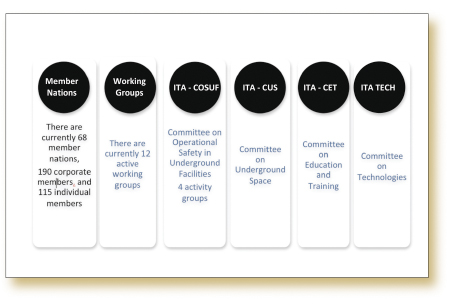Services on Demand
Article
Indicators
Related links
-
 Cited by Google
Cited by Google -
 Similars in Google
Similars in Google
Share
Journal of the Southern African Institute of Mining and Metallurgy
On-line version ISSN 2411-9717
Print version ISSN 2225-6253
J. S. Afr. Inst. Min. Metall. vol.114 n.9 Johannesburg Sep. 2014
SANCOT and the International Tunnelling Association (ITA)
The South African National Committee on Tunnelling (SANCOT) was formed in 1973 during a phase of extensive infrastructure development in South Africa, in particular the construction of the Orange-Fish tunnel. This followed the success of the 1970 TUNCON conference in Durban, after which it was decided that it would be useful to form a body covering the interests of owners, designers, contractors, researchers, and suppliers in the underground construction industry. SANCOT has been active since this time, promoting the use of underground space, exchanging information, and arranging conferences and seminars.

In 2003 there was a significant decrease in tunnelling activity following the successful completion of the Mohale Tunnel, part of the Lesotho Highlands Phase 1B project. At this time SANCOT was re-formed as a committee of the South African Institute of Mining and Metallurgy (SAIMM) and has continued to operate within the SAIMM ever since.
The International Tunnelling Association (ITA) was formed in 1974 with South Africa as a founding member. It is a United Nations affiliated body and is managed as such, with a majority of member nation votes required for the election of office bearers and passing of resolutions. South Africa has been represented at the annual General Assembly every year since the inaugural meeting, in Oslo in 1974, but one.
The work of the ITA is performed by working groups and committees as listed above. These groups and committees are staffed by volunteers who produce bulletins on best practice and arrange events to facilitate the sharing of knowledge within the industry. A wealth of information is available on the ITA website at http://www.ita-aites.org/en/
Anyone wanting information on either organization, or to be included in a database of persons interested in tunnelling, should contact Raymond van der Berg at the SAIMM at Raymond@saimm.co.za.
H.J. Tluczek














